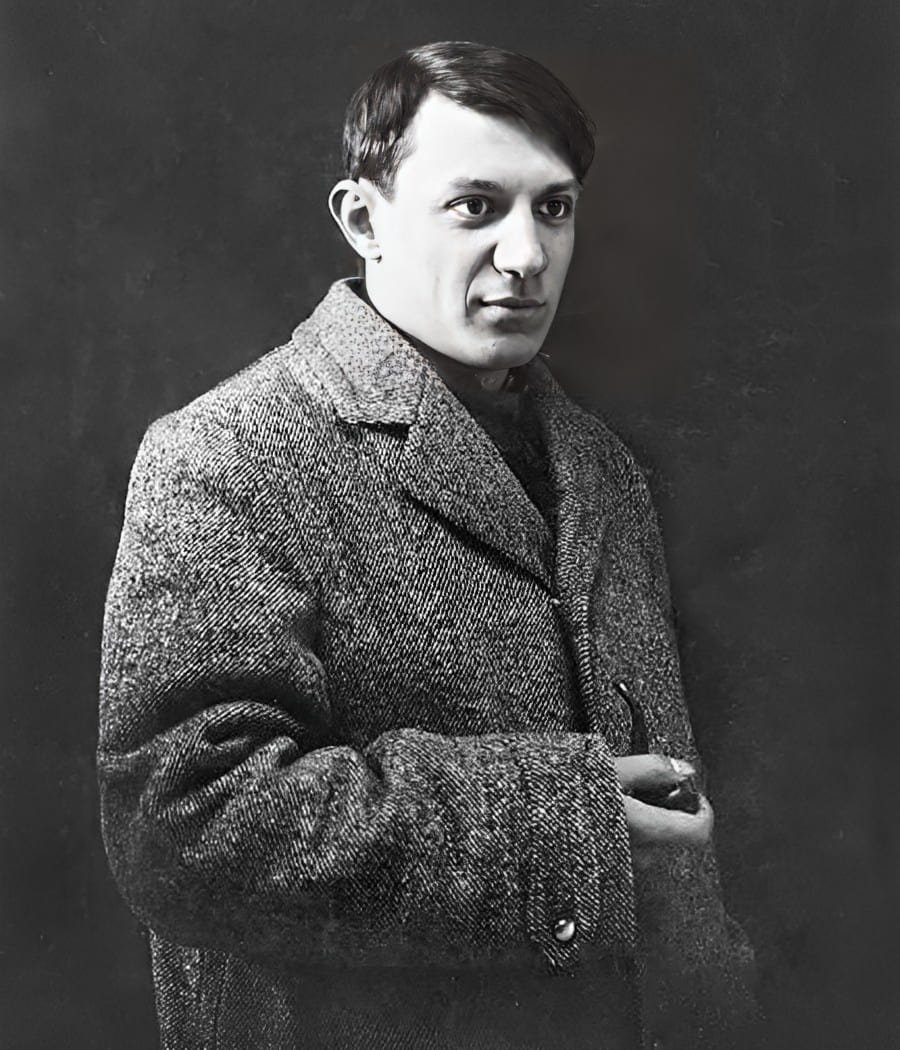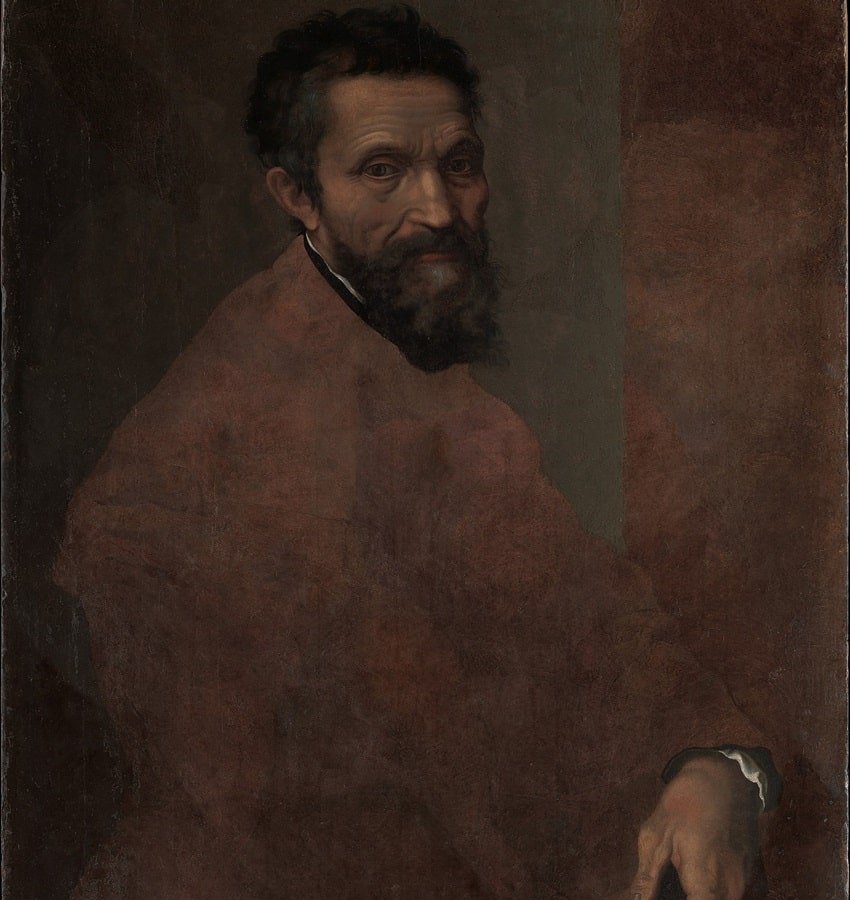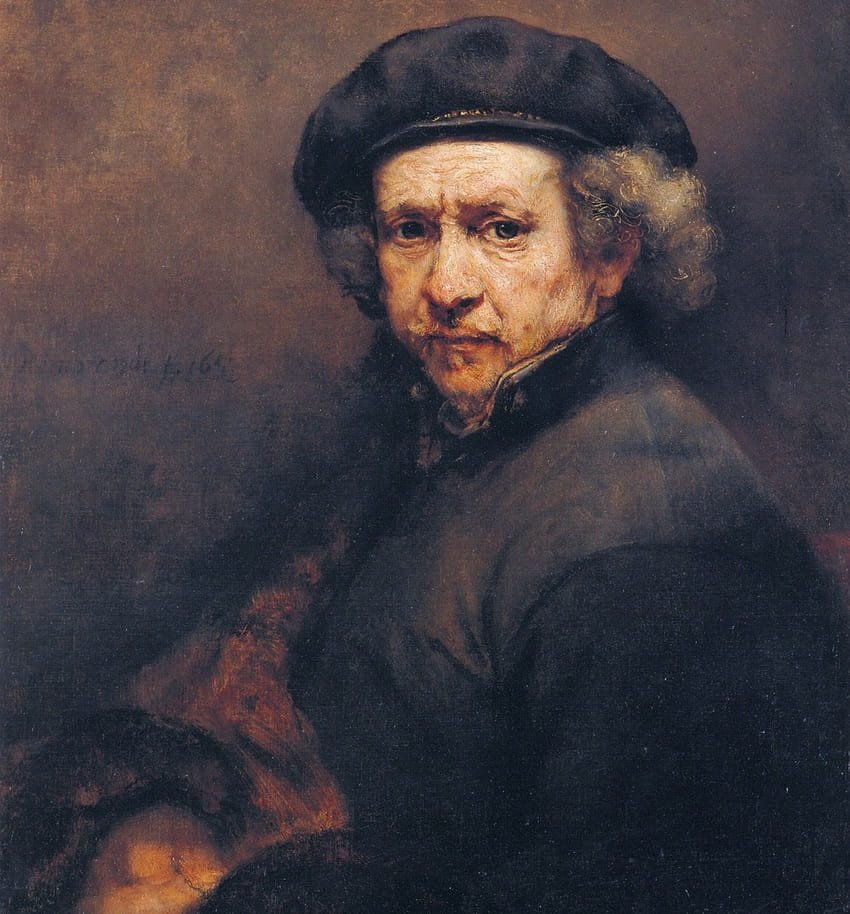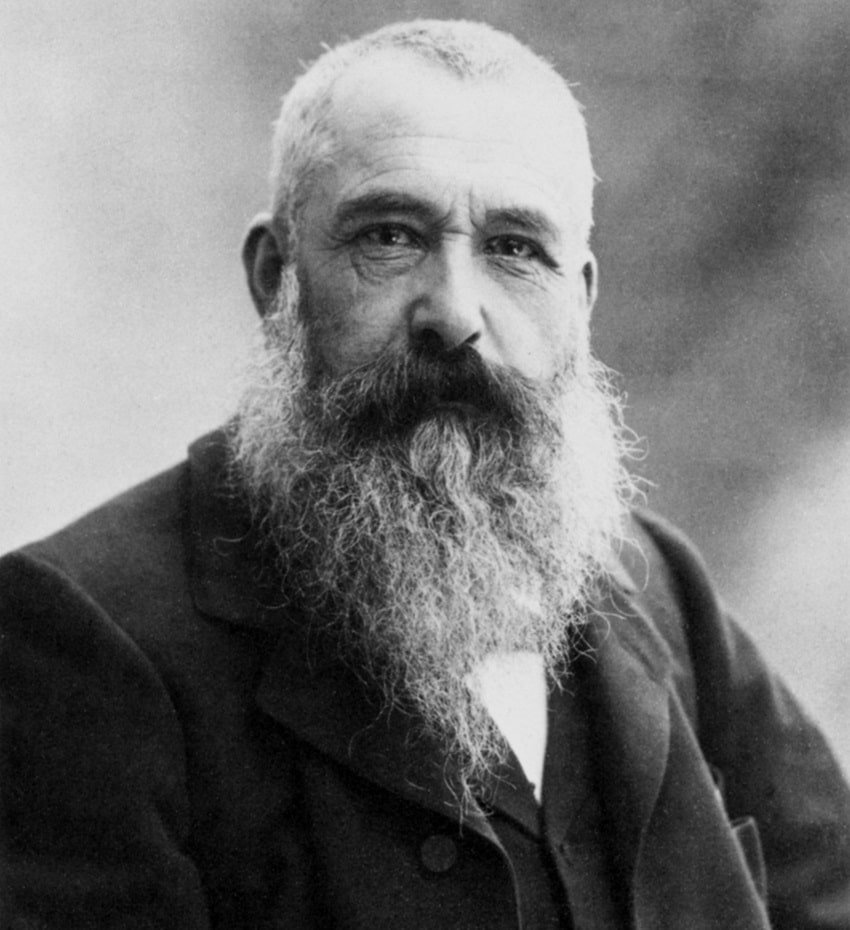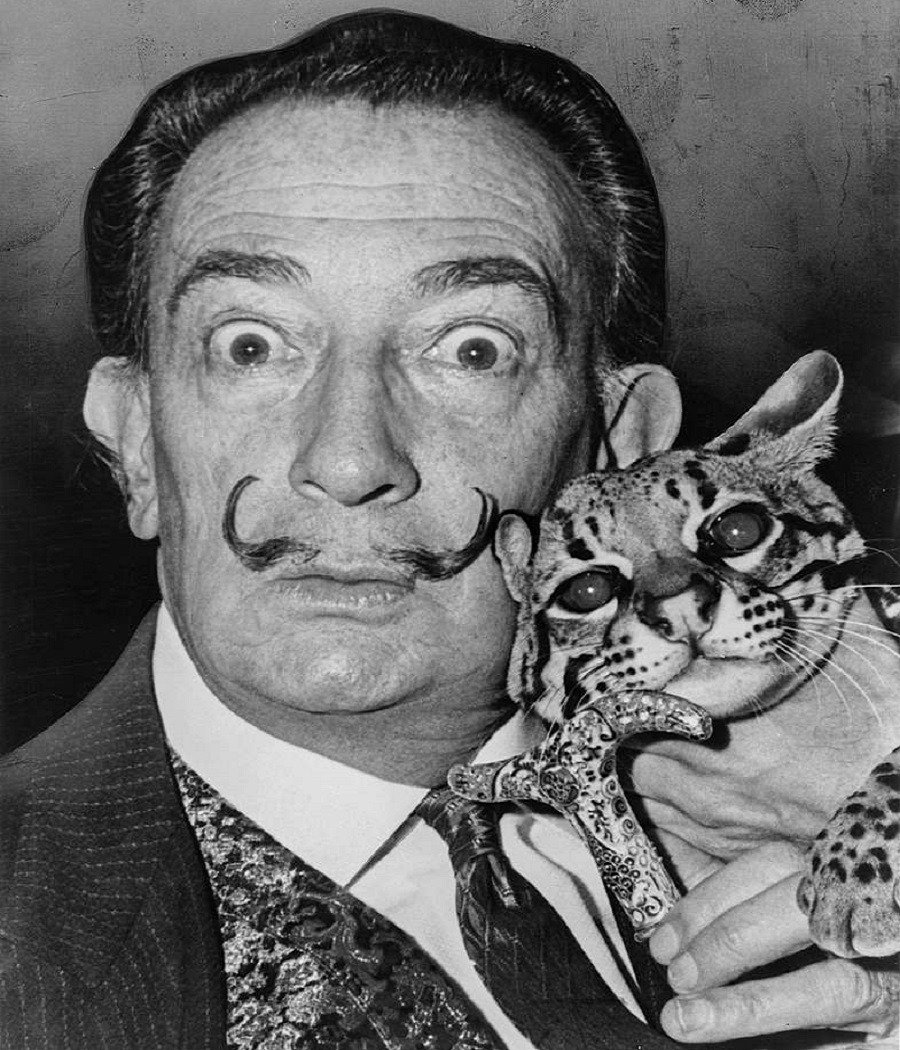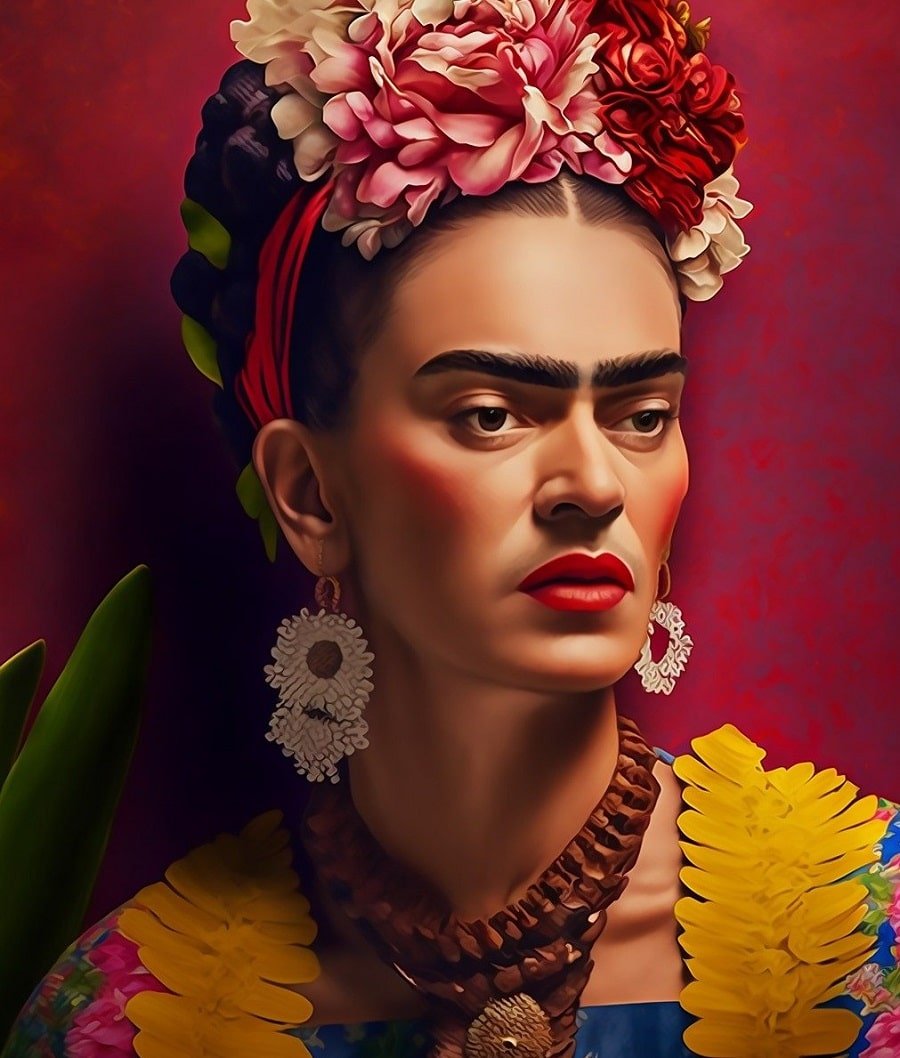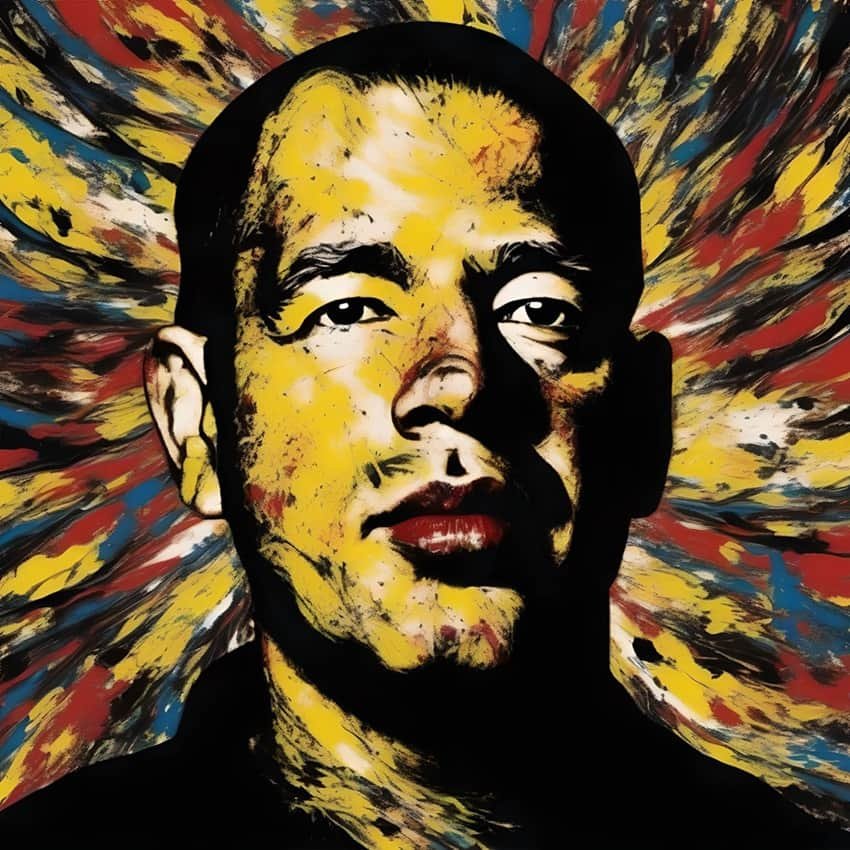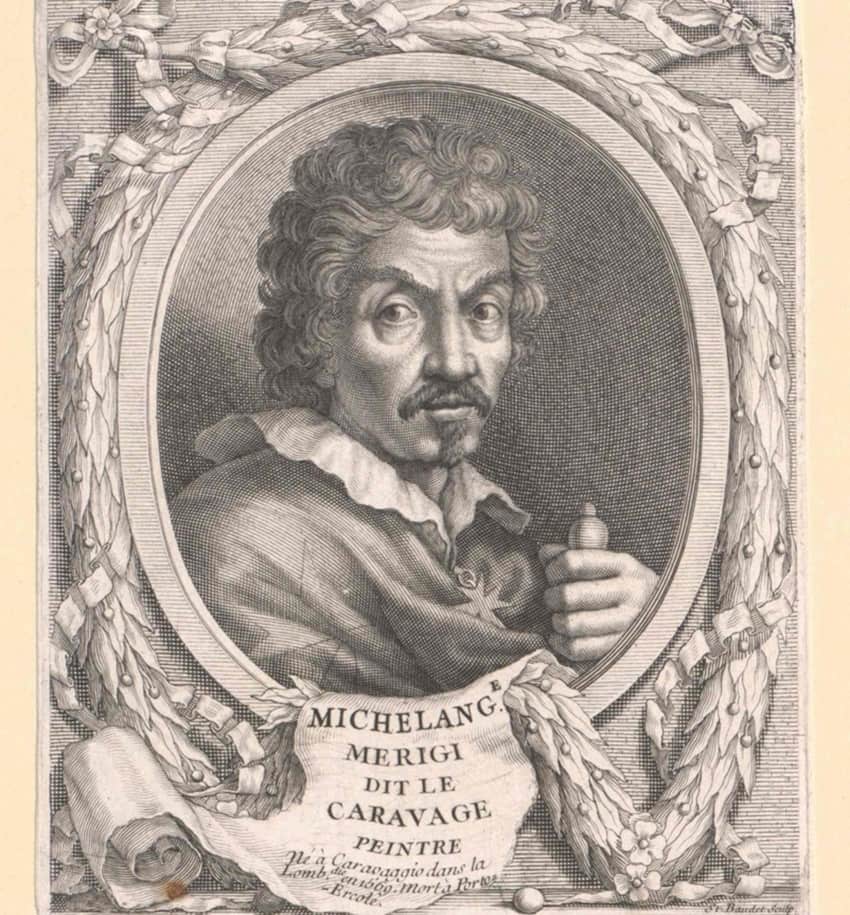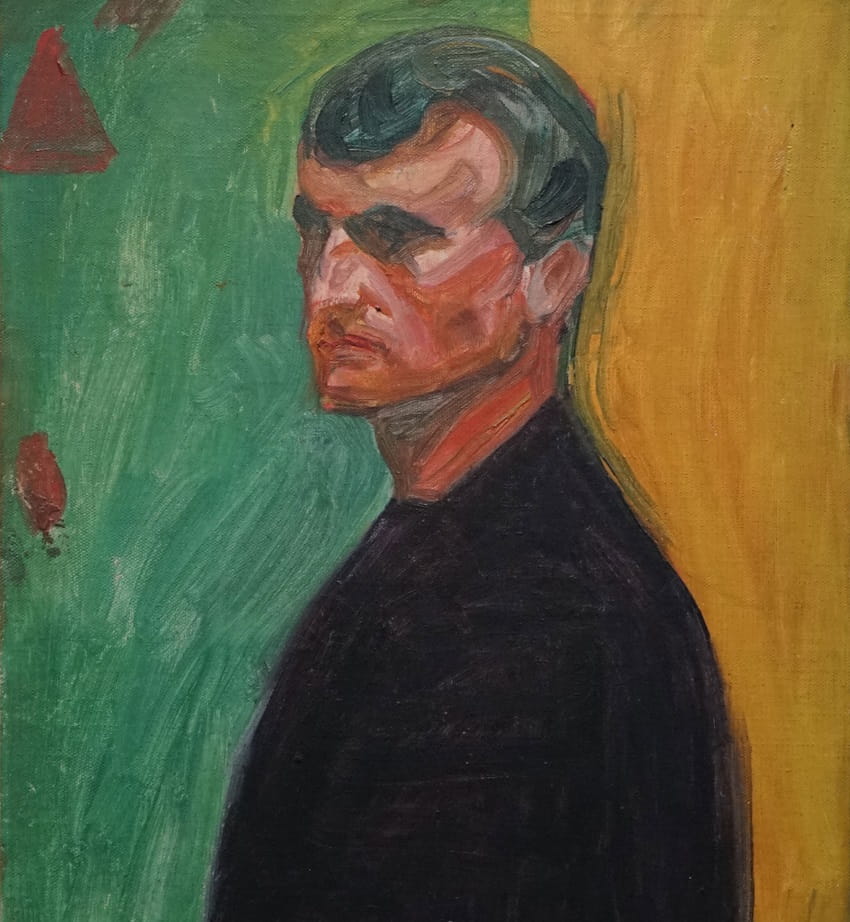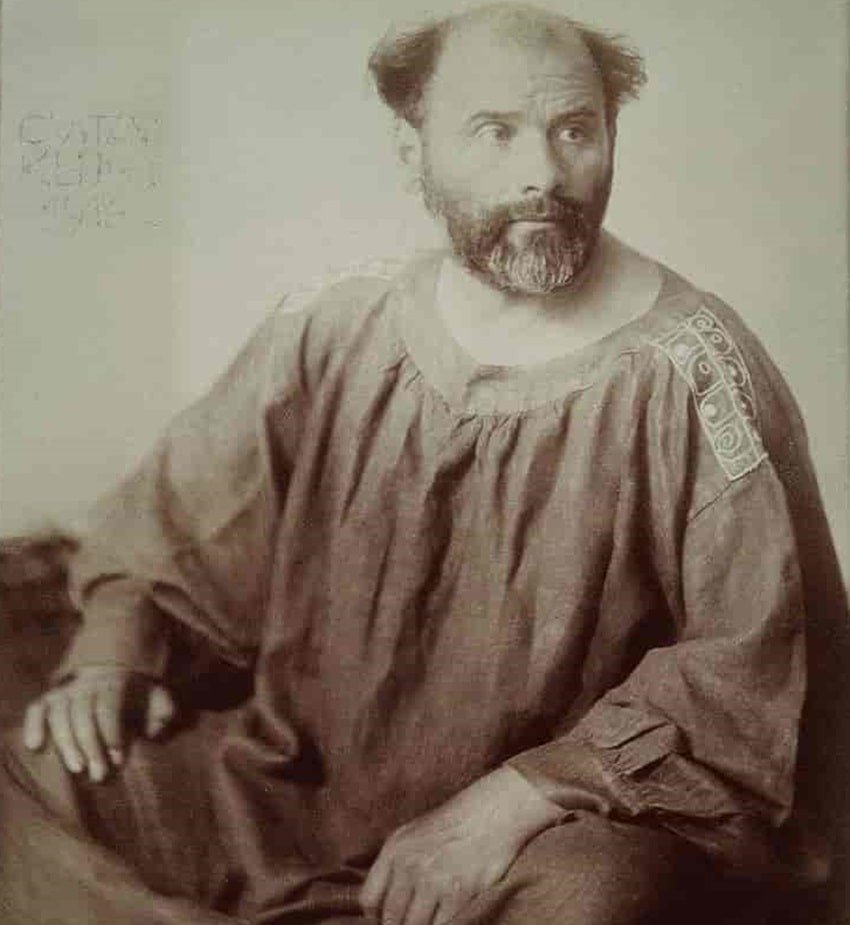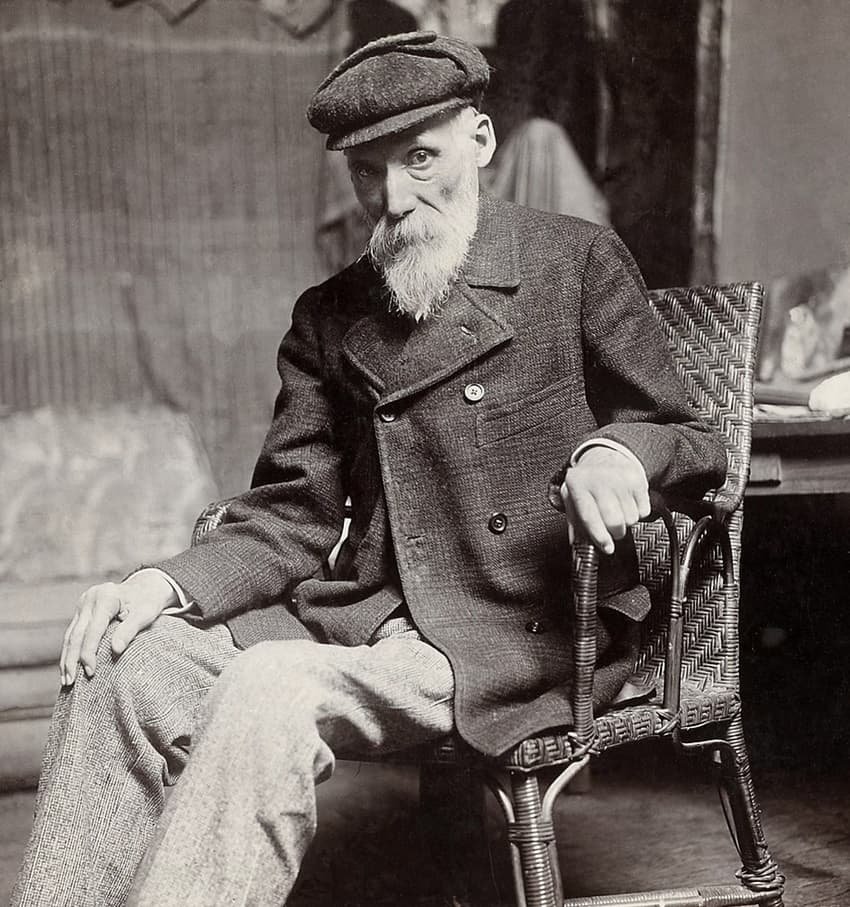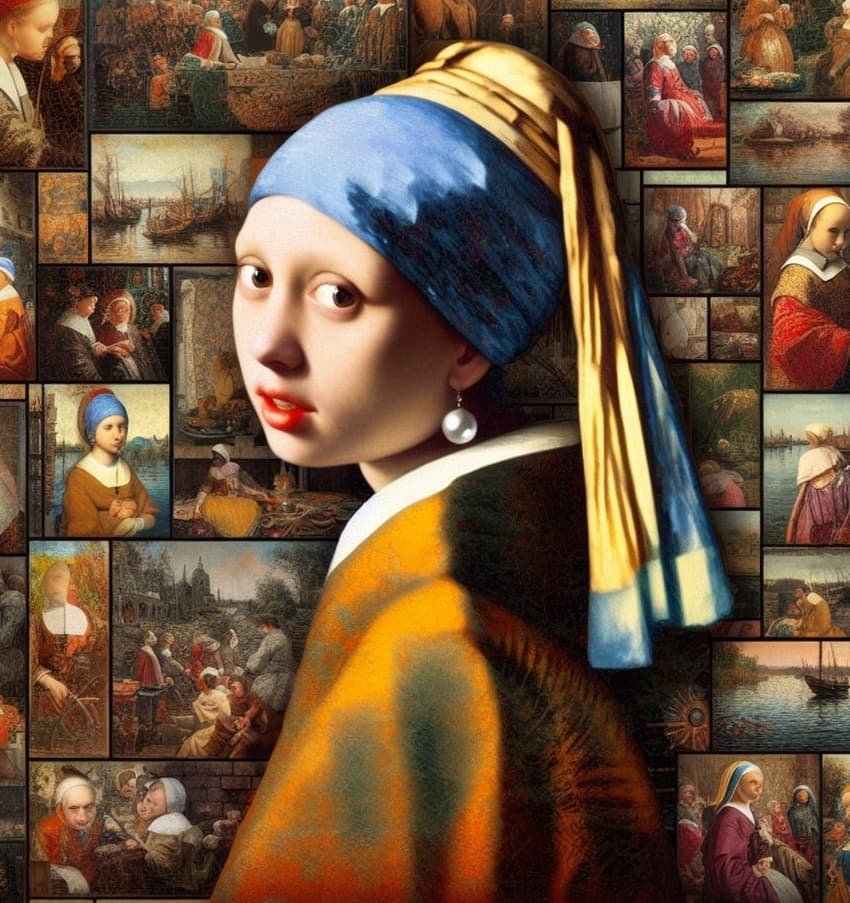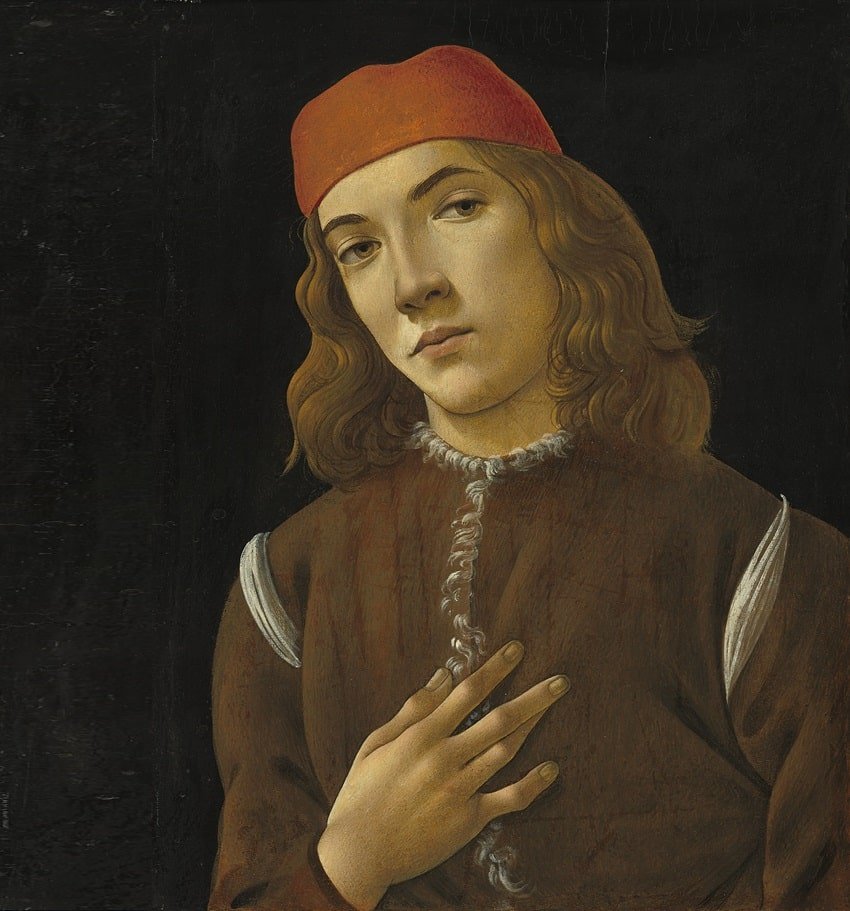20 World’s Famous Painters and Great Artists of all Time
Last Updated on 14th February 2024 by admin
Art is a profound form of human expression that transcends boundaries, and through the ages, painters have played a pivotal role in shaping the way we perceive and interpret the world. Painting is one of the oldest and most enduring art forms. Over the centuries, painters have created some of the most iconic and beloved images in human history. Their works have captured the beauty of the natural world, the human experience, and the depths of our imagination.
This article takes a closer look at the lives and legacies of the top 20 most famous painters in the world. These artists have come from all corners of the globe and have worked in a wide variety of styles. However, these painters have undeniably made significant contributions to the world of art and have left a lasting legacy that continues to inspire and captivate audiences around the globe.
1) Leonardo da Vinci (1452-1519)
Leonardo da Vinci, Born in Anchiano, Italy, in 1452, was a true Renaissance polymath and one of the most famous painters in the world. His life was marked by an insatiable curiosity and an unparalleled intellect that transcended the boundaries of art and extended into science, engineering, anatomy, and various other fields.
Da Vinci’s artistic journey began in the studio of Andrea del Verrocchio, where he honed his skills as a painter and sculptor. He is perhaps best known for his one of the most famous paintings such as the “Mona Lisa” and “The Last Supper” da Vinci’s paintings exemplify technical precision and emotional depth.
Leonardo da Vinci’s life was cut short in 1519, but his legacy continues to inspire and captivate audiences worldwide. His paintings, sculptures, and inventions remain icons of human creativity. His notebooks, filled with sketches and scientific observations, continue to inspire artists and scientists alike.
2) Vincent van Gogh (1853-1890)
Vincent van Gogh was a Dutch Post-Impressionist painter who is known for his bold colors, expressive brushwork, and tortured genius. Vincent van Gogh was born in Zundert, Netherlands, in 1853, his life was marked by mental health struggles and poverty. Despite struggling with mental health challenges and financial difficulties, he created some of the most remarkable paintings in art history.
Some of the most iconic and emotionally paintings of Vincent van Gogh in the history of art, including “Starry Night” and “Sunflowers.” Van Gogh’s initial paintings exhibited a dark and somber tone, mirroring his internal struggles. His artistic style bore a significant influence from Dutch realists like Rembrandt and Frans Hals.
Vincent van Gogh is now considered one of the greatest painters of all time. His unique style, characterized by bold brushwork and vivid colors, has left an indelible mark on art. His emotionally charged paintings continue to resonate with audiences, and he is seen as a pioneer of modern art.
3) Pablo Picasso (1881-1973)
Pablo Picasso, a towering figure in the world of art, was born on October 25, 1881, in Málaga, Spain. He is one of the most famous people from Spain, created groundbreaking works such as “Les Demoiselles d’Avignon” and “Guernica.” Picasso’s work is characterized by its fragmentation and distortion, as well as its exploration of the unconscious mind.
Picasso’s contributions to art are immeasurable. His innovative styles and ability to continually reinvent himself have made him one of the most influential artists of the 20th century. His works continue to challenge and inspire artists and art enthusiasts. Picasso’s family was of middle-class background. His father was a painter who specialized in naturalistic depictions of birds and other game.
Beyond painting, Picasso extended his creativity to sculpture, ceramics, and other forms of visual art. Pablo Picasso passed away on April 8, 1973, but his innovative spirit and groundbreaking contributions to the art world remain immortal.
4) Michelangelo (1475-1564)
Michelangelo Buonarroti, an Italian artist, was famous for his contributions to sculpture and painting. He is best known as one of the most influential figures in the history of Western art, was born on March 6, 1475, in Caprese, Italy. He is widely considered to be one of the greatest artists famous painters of all time.
He rose to prominence with masterpieces such as the “Pieta,” a sculpture of the Virgin Mary holding the lifeless body of Jesus, and the famous statue of “David,” a symbol of human potential and beauty. Michelangelo was also a gifted painter. His most famous painting is the ceiling of the Sistine Chapel in Rome.
Michelangelo was also a talented architect. He designed the dome of St. Peter’s Basilica in Rome, which is considered to be one of the greatest architectural achievements of all time. Michelangelo’s works exemplify the High Renaissance style, known for its harmonious proportions and idealized forms.
5) Rembrandt van Rijn (1606-1669)
Rembrandt van Rijn, a Dutch master of the Baroque period, was born in Leiden, Netherlands, in 1606. Rembrandt’s paintings, such as “The Night Watch” and “The Anatomy Lesson of Dr. Nicolaes Tulp,” exemplify his mastery of chiaroscuro and his ability to capture the depth of human emotion, making him one of the greatest painters of the Dutch Golden Age.
Rembrandt was also known for his portraits, which are often characterized by their psychological depth and emotional intensity. Rembrandt’s influence extends far beyond his lifetime. Regarded as one of the greatest painters in European art history, his impact on Baroque art is immeasurable.
Rembrandt is considered to be one of the greatest painters of all time. His work has had a profound impact on the development of Western art, and his influence can be seen in the work of many later artists, including Vincent van Gogh, Pablo Picasso, and Andy Warhol.
6) Claude Monet (1840-1926)
Claude Monet was a French painter who is considered one of the founders of Impressionism. Claude Monet was born in Paris, France, on November 14, 1840. He is known for his landscapes, which are characterized by their use of light and color, as well as their emphasis on capturing the fleeting effects of nature.
Monet’s paintings often depict scenes of water, such as rivers, ponds, and the ocean. His work has had a profound impact on the development of modern art. He is known for his landscapes and scenes of everyday life, his innovative use of color and light is exemplified in masterpieces such as “Water Lilies” and “Impression, Sunrise.”
Claude Monet died in Giverny, France, on December 5, 1926. He is considered one of the famous painters of all time, and his work has had a profound impact on the development of modern art. His paintings grace the walls of museums worldwide, serving as timeless sources of inspiration and emotional resonance for people even today.
7) Salvador Dalí (1904-1989)
Salvador Dalí was a Spanish surrealist painter, sculptor, printmaker, stage designer, poet, and filmmaker, born in Catalonia, Spain, in 1904 and spent most of his adult life in France. His iconic paintings, such as “The Persistence of Memory,” and “The Elephants,” showcase his dreamlike, fantastical imagery.
Dalí’s surrealism pushed the boundaries of artistic expression and remains influential in contemporary art. His eccentric persona and distinctive style continue to captivate audiences, making him a prominent figure in the surrealist movement. Dalí was a technically skilled artist, and his paintings are often characterized by their intricate detail and use of color.
Salvador Dalí’s impact extends far beyond his eccentric persona. His artistic innovations, eccentricities, and contributions to Surrealism have left an indelible mark on the art world. Additionally, his collaboration with filmmaker Luis Buñuel on the surrealist film “Un Chien Andalou” serves as a testament to his multidisciplinary approach.
8) Frida Kahlo (1907-1954)
Frida Kahlo was a Mexican painter known for her self-portraits and her poignant depictions of pain and suffering. Frida Kahlo was born in Coyoacán, Mexico City, in 1907. She was a symbolic person in the art of the 20th century, and became one of the most famous people in Mexico and also consider as one of the famous painters of all time.
Her life was marked by physical pain, tumultuous relationships, and a fervent commitment to expressing her inner world through art. Kahlo’s self-portraits are among her most famous works. She painted herself repeatedly throughout her life, using her own body as a canvas to explore themes of identity, pain, and beauty.
Her works, including “The Two Fridas” and “Self-Portrait with Thorn Necklace and Hummingbird,” reflect her personal struggles and cultural heritage. Kahlo’s introspective and symbolic works have made her an iconic figure, particularly among feminists and those exploring issues of identity and self-expression. Her art continues to resonate with a wide audience.
9) Jackson Pollock (1912-1956)
Jackson Pollock, an influential American artist, was born in Cody, Wyoming, in 1912, who is considered one of the founders of the abstract expressionist movement. Pollock’s life was marked by a pioneering approach to art, characterized by his revolutionary “drip painting” technique.
Jackson Pollock best known for his “action paintings,” which he created by pouring or dripping paint onto a horizontal canvas. His “drip paintings,” such as “Autumn Rhythm” and “Number 1A, 1948,” are iconic examples of his unique style. His contributions to Abstract Expressionism, with its emphasis on spontaneity and the subconscious, changed the trajectory of modern art.
Pollock’s artistic talent was evident at an early age, and he began drawing and painting as a child. After graduating from high school in 1930, he moved to New York City to study art at the Art Students League. Unfortunately, he died in a car accident at the age of 44 in 1956, but his work on the world of art is immeasurable and continues to be exhibited and admired around the world.
10) Henri Matisse (1869-1954)
Henri Matisse was a French artist who is widely recognized as a leading figure in the development of modern art. He was a leader of the Fauve movement, a group of artists who were known for their use of bold, vibrant colors. Matisse, along with other artists, embraced Fauvism, characterized by bold colors and spontaneous brushwork.
Henri Matisse is known for his innovative use of color and form, he was created timeless works like “The Dance” and “Woman with a Hat.” He was one of the first artists to use color in a purely expressive way, and he helped to liberate painting from the constraints of realism.
Matisse’s art is often associated with a sense of joy and exuberance. His ability to convey mood and atmosphere through color was groundbreaking. continues to inspire artists, and his influence is felt across various artistic movements. Henri Matisse died in Nice, France, in 1954. He is considered one of the most famous painters of the 20th century, and his work continues to inspire artists and art lovers around the world.
11) Georgia O’Keeffe (1887-1986)
Georgia O’Keeffe was an famous American painter who is known for her large-scale flower paintings and her abstractions of the New Mexico landscape. Born in the quaint town of Sun Prairie, Wisconsin, in 1887, O’Keeffe’s artistic inclination blossomed early, her brushstrokes weaving tales of dreams and emotions.
She was a pioneer in the American art scene, and her work helped to break down traditional boundaries between painting and sculpture. Her enlarged flower paintings, such as “Jimson Weed” and “Black Iris,” showcase her ability to transform ordinary subjects into powerful symbols of beauty and sensuality.
O’Keeffe died in Santa Fe, New Mexico, in 1986, her unique vision and her ability to capture the essence of her subjects through abstraction have made her a prominent figure in American art. She is considered one of the most important American artists of the 20th century. Her paintings continue to be celebrated for their simplicity and power.
12) Caravaggio (1571-1610)
Michelangelo Merisi da Caravaggio, an Italian Baroque painter, was born in Milan in 1571. Caravaggio’s tumultuous life was marked by artistic brilliance, controversy, and a penchant for pushing the boundaries of conventional art. He is considered one of the most famous painters of the Baroque period.
Caravaggio’s paintings is renowned for his dramatic use of light and shadow, which he used to create a sense of drama and tension. Many of Caravaggio’s paintings were religious in nature and often chose scenes from the Bible that were violent or disturbing. His works, including “The Calling of Saint Matthew” and “Judith Beheading Holofernes,” are characterized by intense realism.
He also portrayed his figures with great realism, and he was not afraid to unfilt or even depict them in bizarre ways. Caravaggio’s influence on Baroque painting is immeasurable. His dramatic lighting and realistic depictions of subjects left a lasting impact on the art world, and his legacy can be seen in subsequent Baroque and realist painters.
13) Edvard Munch (1863-1944)
Edvard Munch, a Norwegian painter and printmaker , Born in Løten, Norway, in 1863. His life and art were deeply influenced by personal struggles, including the deaths of his mother and sister. These experiences deeply affected him, and they became recurring themes in his art.
Edvard Munch most famous painting “The Scream” is a masterpiece that encapsulates the anxiety and existential dread of the modern human condition. Munch’s exploration of themes such as love, jealousy, and death is evident in works like “The Madonna” and “The Dance of Life.”
Munch studied art at the Royal School of Fine Arts in Oslo, but he was not satisfied with the traditional teachings. He traveled to Paris in 1885, where he was exposed to the work of Impressionism, Post-Impressionism, and Symbolism. These movements had a profound impact on his style, and he began to develop his own unique approach to Expressionism.
14) Andy Warhol (1928-1987)
Andy Warhol, an American artist and leading figure in the Pop Art movement, was Born in Pittsburgh, Pennsylvania, in 1928. He is known for his silkscreened images of everyday objects and celebrities, his use of bold colors and graphic lines, and his exploration of the relationship between art and mass culture.
His work was often controversial, but it was also highly influential, and he is now considered one of the most important artists of the 20th century. His iconic works include “Campbell’s Soup Cans” and “Marilyn Diptych.” Warhol was also a filmmaker and a key figure in the New York art scene.
Warhol’s work was constantly evolving, and he experimented with a variety of media, including film, photography, and performance art. He was also a successful businessman, and he opened The Factory, a studio and social hub where he collaborated with other artists and musicians.
15) Gustav Klimt (1862-1918)
Gustav Klimt was an Austrian painter born in Baumgarten, Austria, in 1862 ,who is considered one of the most important figures in the Vienna Secession movement. He is known for his paintings of women, which are often characterized by their stylized forms, rich colors, and decorative patterns.
Klimt’s art often incorporated symbolic and allegorical elements. Notable works like “The Kiss” and “Portrait of Adele Bloch-Bauer I” showcase his use of ornate patterns, gold leaf, and symbolic motifs, reflecting a fascination with themes of love, sexuality, and the human psyche.
Klimt’s distinctive style, which combined symbolism and sensuality, is celebrated for its unique beauty. His influence can be seen in Art Nouveau and Art Deco movements, as well as contemporary artists who appreciate his ornate and symbolic approach to painting. Klimt’s work continued to be popular throughout his career. He exhibited his work internationally, and he was awarded numerous prizes.
16) Pierre-Auguste Renoir (1841-1919)
Pierre-Auguste Renoir, a French Impressionist painter, into a modest family in Limoges, France, in 1841. Renoir’s life and art reflected the vibrancy of Parisian society during the late 19th and early 20th centuries. He is famous for his vibrant depictions of everyday life, his mastery of light and color, and his graceful portrayal of the female form. His paintings exude a sense of joy, energy, and sensuality, captivating viewers with their enchanting beauty
Renoir displayed a natural talent for drawing and painting from a young age. His artistic aspirations were encouraged by his father, a tailor who also painted as a hobby. His Iconic paintings include “Luncheon of the Boating Party” and “Dance at Le Moulin de la Galette.”
Renoir’s ability to capture the joy and beauty of life through his art is a hallmark of Impressionism. His depictions of leisure and everyday moments continue to inspire a sense of nostalgia and appreciation for the simple pleasures of life. His paintings continue to captivate audiences worldwide, offering a timeless celebration of beauty, vitality, and the simple joys of life.
17) Raphael (1483-1520)
Raffaello Sanzio da Urbino, better known as Raphae was an Italian Renaissance painter and architect, born in Urbino, Italy, in 1483. He is widely considered to be one of the greatest painters of all time. Raphael began his artistic apprenticeship under his father, a painter, and later worked in the workshops of Perugino and Pinturicchio. His early works, like “The Marriage of the Virgin,” displayed a precocious talent and an understanding of composition.
Raphael’s career flourished in Rome, where he received commissions from popes and prominent figures. His masterpiece, “The School of Athens,” frescoed in the Vatican, exemplifies his mastery of perspective, composition, and the harmonious integration of classical elements. Raphael’s early death at the age of 37 left many wondering about the potential masterpieces the art world lost.
Raphael’s influence on Renaissance art is immense. His contributions to the development of perspective, classical harmony, and idealized beauty left an enduring mark. He is considered to be one of the greatest painters of all time, and his work is studied and admired by artists and art historians in every corner of the globe.
18) Johannes Vermeer (1632-1675)
Johannes Vermeer, a Dutch Baroque painter, was born in Delft, Netherlands, in 1632. He is considered one of the greatest masters of Dutch Golden Age painting. He is known for his domestic interior scenes of middle-class life, his use of light and color, and his ability to capture the beauty of everyday moments.
Vermeer is celebrated for his masterful use of light and his ability to capture quiet, intimate moments. His paintings, such as “Girl with a Pearl Earring” and “The Milkmaid,” are characterized by a delicate interplay of light and shadow, showcasing his exceptional skill in rendering textures and surfaces.
Johannes Vermeer’s legacy rests on the exceptional quality and timeless beauty of his paintings. His ability to infuse ordinary scenes with a sense of serenity and luminosity has earned him a revered place in the pantheon of art history, making him one of the most celebrated Dutch painters of the Golden Age.
19) Sandro Botticelli (c. 1445-1510)
Sandro Botticelli was an Italian painter of the Renaissance period, best known for his graceful and idealized depictions of the human form. Born in Florence, Italy, in 1445, trained in the workshop of Fra Filippo Lippi, Botticelli quickly developed his artistic skills. His nickname “Botticelli” means “Little Barrel,” possibly given to him by his older brother.
Botticelli’s art is famous for its graceful figures, flowing lines, and ethereal beauty. He is particularly renowned for his paintings of mythological subjects, such as “The Birth of Venus” and “Primavera” exemplify his mastery of mythological themes, combining classical influences with Renaissance ideals of beauty.
Sandro Botticelli is considered one of the most important and influential painters of the Renaissance period. His paintings have captivated audiences for centuries with their beauty, grace, and symbolic richness. His work continues to inspire artists and art lovers around the world.
20) Hieronymus Bosch (c. 1450-1516)
Hieronymus Bosch, born Jheronimus van Aken, was a Dutch Renaissance painter born in ‘s-Hertogenbosch, Netherlands, in approximately 1450. He is famous for his intricate and fantastical paintings that often depict religious themes but also explore a wide range of subjects, including mythology, folklore, and human folly. His
Bosch began his career as a painter of small-scale devotional works, but he quickly established himself as a skilled and innovative artist. His work is characterized by its grotesque imagery, its symbolism, and its enigmatic quality. His most famous painting, “The Garden of Earthly Delights,” is a triptych that continues to mystify and intrigue viewers.
Bosch’s unique and otherworldly creations have left a lasting impact on the art world. His use of symbolism and his ability to provoke thought and interpretation make his works timeless and enigmatic. He is considered one of the most original and influential painters of the Northern Renaissance.
These 20 famous painters represent a diverse array of styles, movements, and time periods in the world of art. Their contributions have shaped the course of art history and continue to inspire artists and art enthusiasts around the globe. While this list is by no means exhaustive, it offers a glimpse into the rich tapestry of artistic expression and creativity that has enriched our lives and broadened our understanding of the human experience through the power of the brush and canvas.



